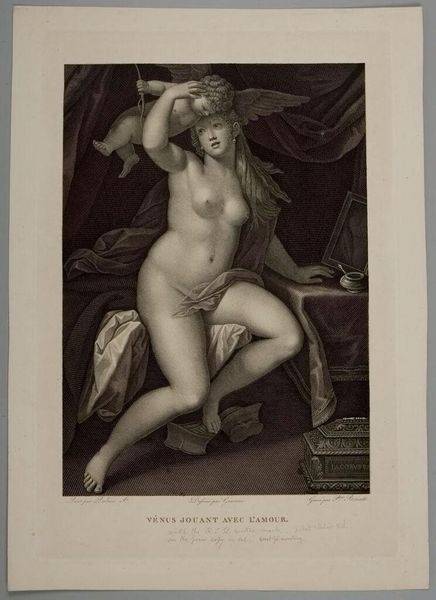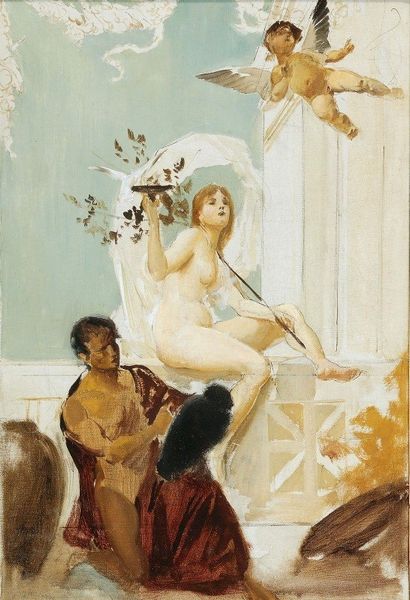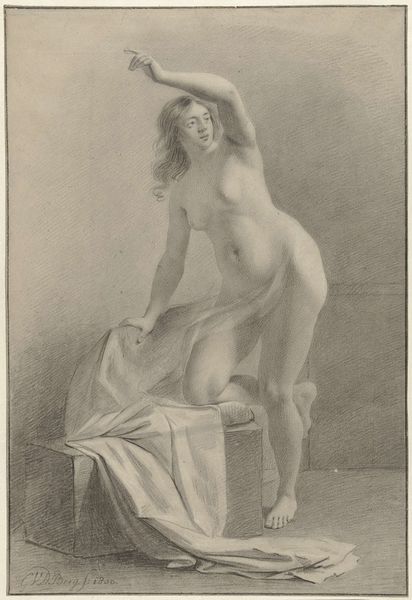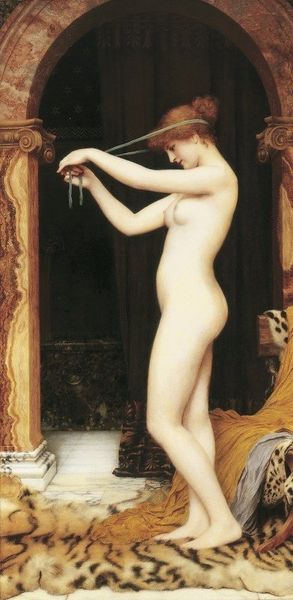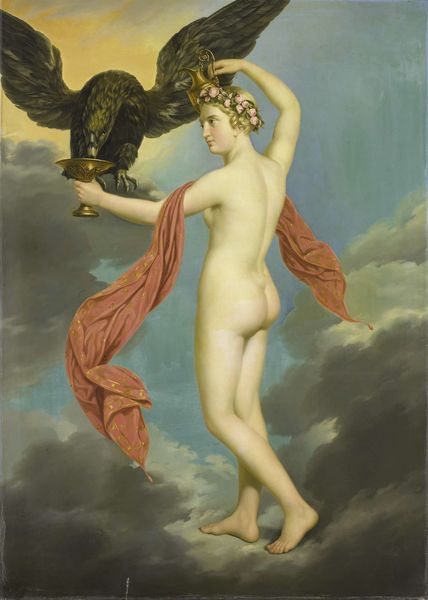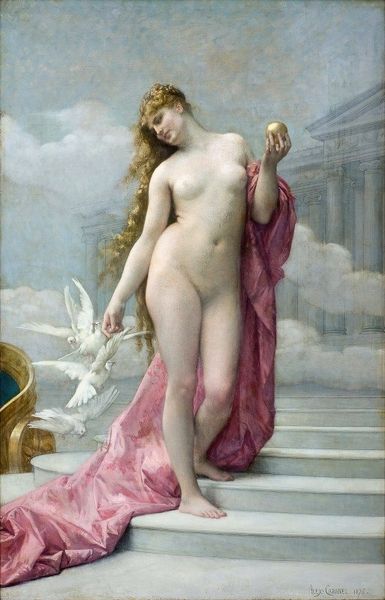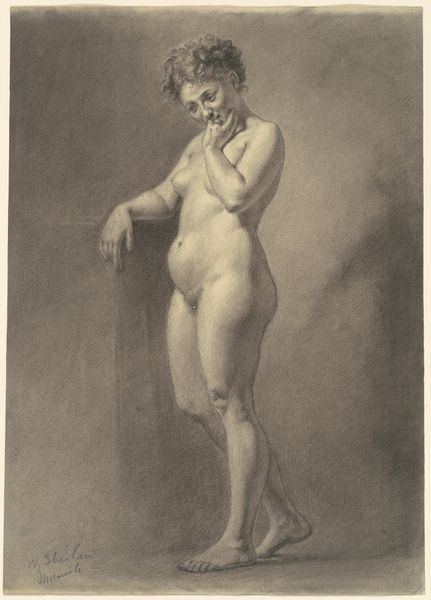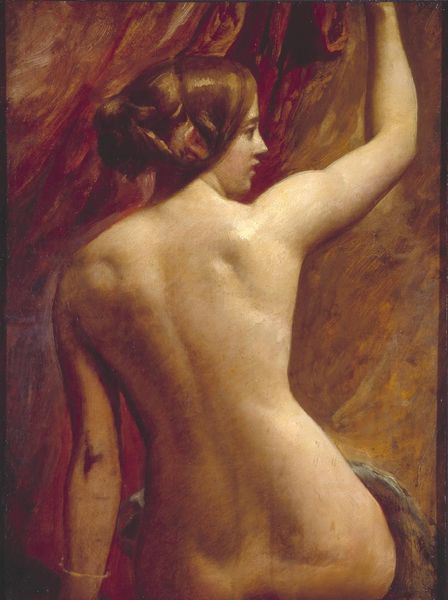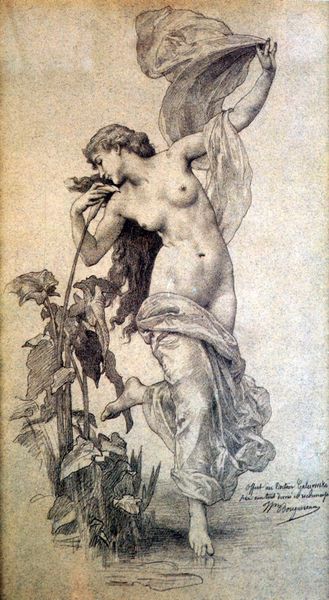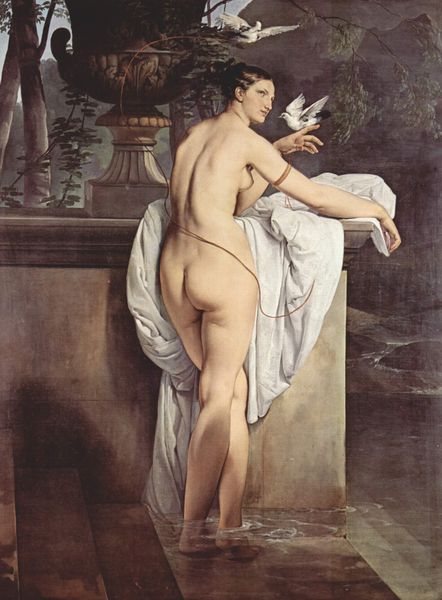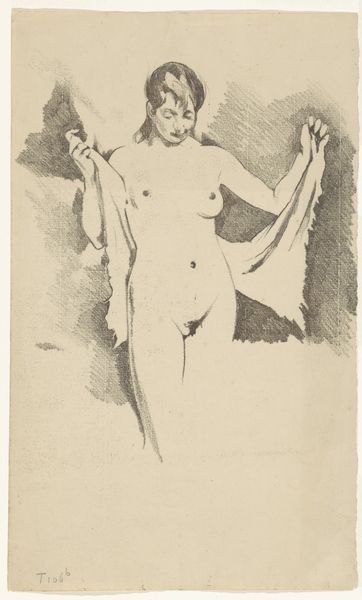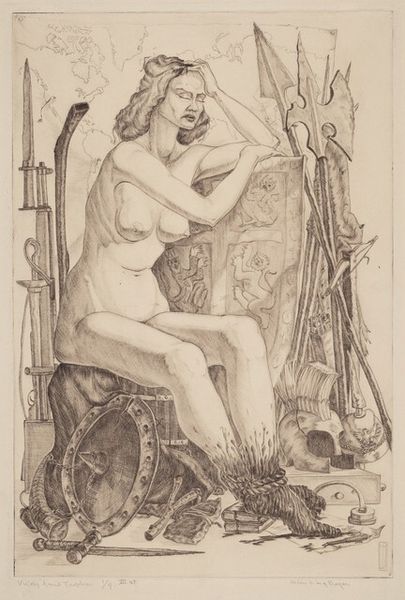
drawing, sculpture, pencil
#
portrait
#
drawing
#
allegory
#
sculpture
#
figuration
#
sculpture
#
pencil
#
mythology
#
symbolism
#
history-painting
#
academic-art
#
nude
Copyright: Public Domain: Artvee
Curator: Let's take a closer look at Gustav Klimt's "Allegory of Sculpture," created in 1889. It's a pencil drawing showcasing his early academic style. What are your initial thoughts? Editor: Stark. There's something cold and detached in its neoclassical stillness, but the darkness near the bottom, contrasted with the goddesslike figure, certainly hints at themes Klimt would later explore in more depth. Curator: Exactly. This drawing, made while Klimt was still a student, reflects the conservative artistic climate of late 19th-century Vienna. Yet, even here, he seems to subtly push against those boundaries. It's vital to view this within the socio-political tensions bubbling beneath the surface of the Austro-Hungarian Empire. Consider the construction of identity in the face of rigid imperial expectations. Editor: The imagery is heavy with symbolism, though. The female figure, perhaps representing Sculpture itself, holds a small sculpture in her hand, an object within an object, like a microcosm of creativity and inspiration, referencing established neoclassical allegories of arts and sciences. Then we have the seated figure – notably dark – could be linked to labor, maybe, but the way the head is cast downwards indicates dejection. The masks near the top look like relics of tragedy and comedy. Curator: Precisely. The racial dynamics at play here need to be examined. The dark figure is juxtaposed with the idealized, pale female form, embodying beauty. It speaks to the power dynamics inherent in classical representation, perhaps highlighting the historical exploitation underpinning artistic production. The role of othering in upholding ideas of idealized beauty... Editor: And the ever-present question: who gets to define these concepts? Even at this early stage, the dialogue Klimt establishes between classical iconography and underlying psychological weight makes it quite fascinating. The cultural memory is so heavy in those details. Curator: Ultimately, examining pieces such as this helps deconstruct historical art paradigms. This drawing exposes rather than celebrates the traditional role assigned to certain bodies within a conservative socio-cultural system. Editor: An academic piece serving, perhaps unknowingly, as a powerful precursor to Klimt's later iconoclastic explorations. Fascinating.
Comments
No comments
Be the first to comment and join the conversation on the ultimate creative platform.
